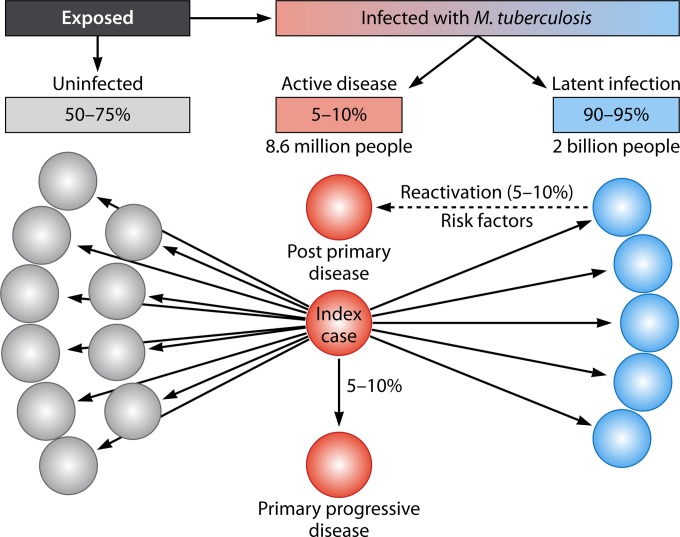FIG 1.
Infectious spread of M. tuberculosis and resulting disease. An infectious individual with pulmonary TB can spread disease via aerosols—bacilli are expelled during coughing, talking, singing, and other activities, establishing infection in approximately 25 to 50% of close contacts. Most newly infected contacts develop LTBI (90 to 95%), though a small percentage (5 to 10%) immediately develop primary progressive active disease. Among LTBI cases, 5 to 10% of individuals will have reactivated disease over their lifetime, in what is termed postprimary disease. Risk factors associated with reactivation include immunodeficiency caused by HIV coinfection, use of immunosuppressive drugs, and diabetes mellitus; socioeconomic status; and smoking. Active disease, either primary or postprimary, may present as pulmonary disease or extrapulmonary disease, depending on age, the presence or absence of underlying disease, the genotype of the M. tuberculosis strain, and immune status. Colored circles represent contacts of an “index case.” Red represents active disease, blue represents latent infection, gray represents no disease, black solid lines represent person-to-person aerosol transmission, and the black dashed line represents reactivation of latent infection.

